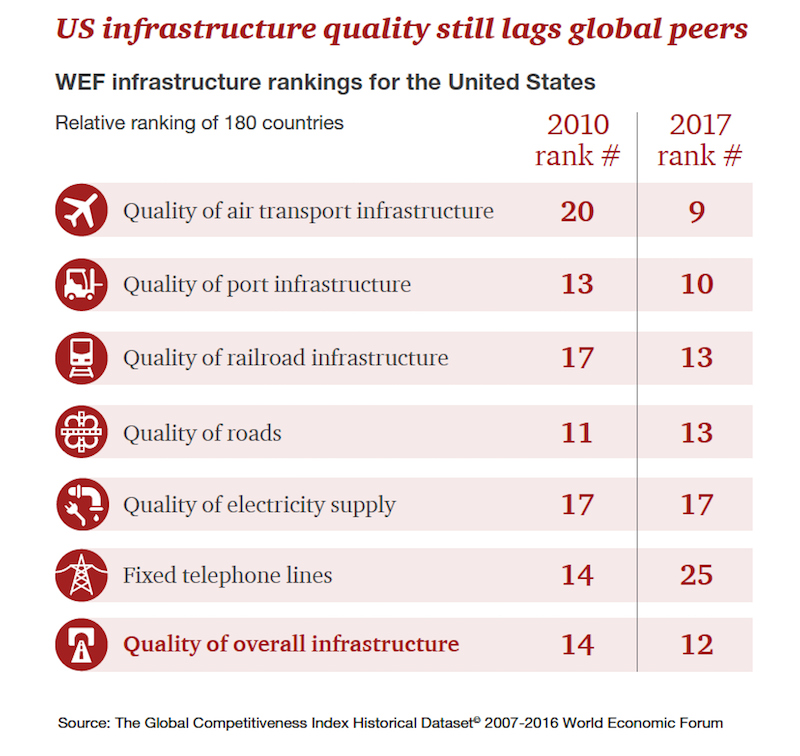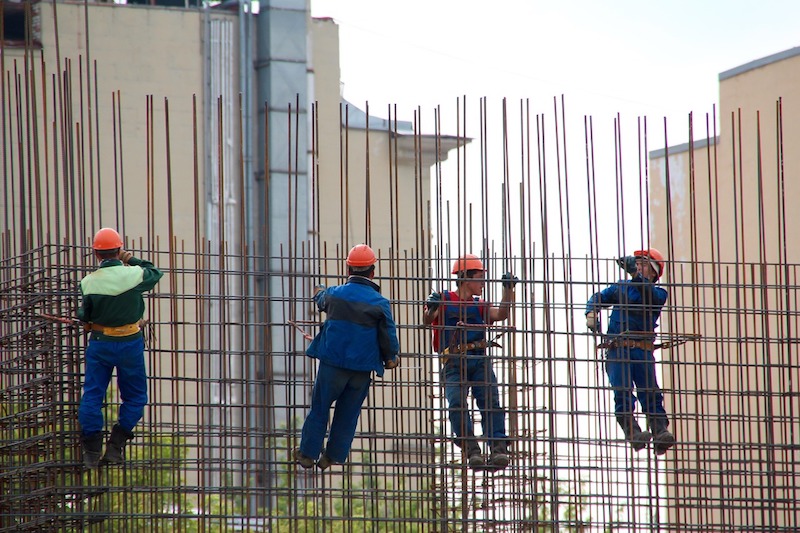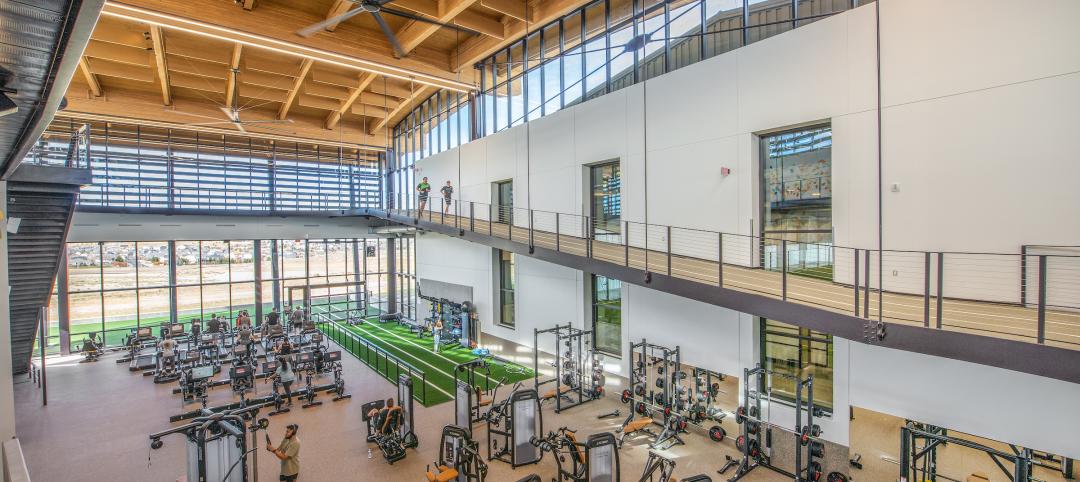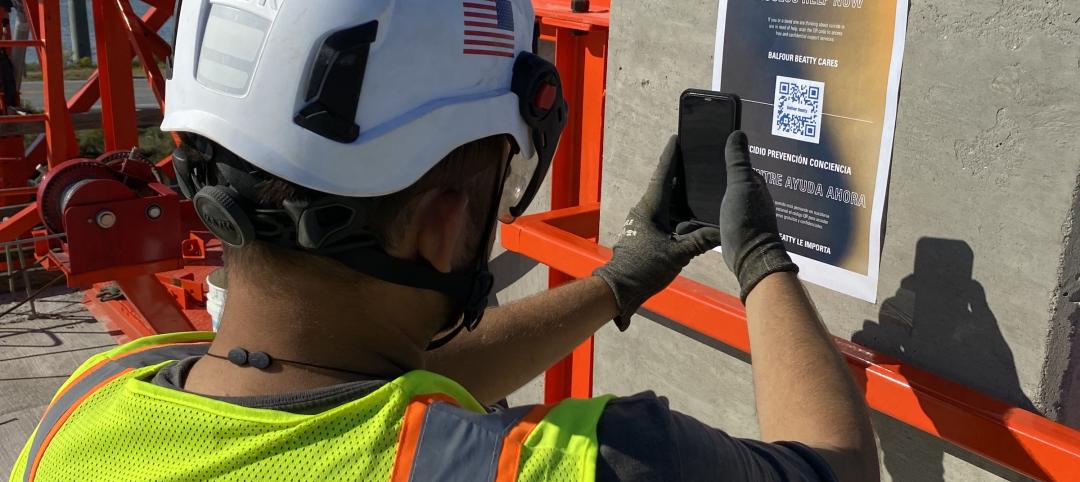The most likely beneficiaries of new infrastructure investment in the U.S. would be the engineering, construction, and industrial manufacturing sectors. And as government officials debate the next major infrastructure stimulus plan, PwC, the accounting and consulting firm, argues in a new study that industrial products and services companies must think proactively about positioning themselves as suppliers, planners, and even investors to help direct which infrastructure projects get funded, and how they are paid for.
The Trump Administration and the leadership of the Democratic Party have each come up with programs to infuse an estimated $1 trillion of infrastructure spending into the economy over the next decade. Those plans roughly align on where that investment is most heavily needed. Where they diverge—or at least are presumed to diverge, as details remain unclear—is primarily over how projects would be funded.
The Democrats’ plan would be chiefly debt financed, but also includes a $10 billion provision for an infrastructure bank to extend loan guarantees and low-cost loans to spur investment. Trump’s plan—which includes paying for a security wall across the U.S.-Mexico that alone could cost up to $25 billion—favors some combination of tax incentives and public-private partnerships, as long as what gets built subscribes to Trump’s “America First” mantra for hiring and product purchasing.
(A stumbling block to new legislation could be Republican budget hawks who have expressed opposition to any plan that isn’t revenue neutral. House Speaker Paul Ryan has gone so far as to state that every dollar of federal money for infrastructure spending must be matched by $40 of private investment. Some Democrats have also objected to the developer-heavy council Trump has assembled to pick and choose projects worthy of stimulus money.)

The U.S. seriously lags behind other industrial nations in the quality of its infrastructure. Image: PwC study “What a U.S. Infrastructure Stimulus Could Mean for the Industrial Sector.”
Meanwhile, the clock keeps ticking on the country’s crumbling bridges, roads, tunnels, and airports. The American Society of Civil Engineers (ASCE) estimates $3.3 trillion of investment is needed to maintain, repair and build new infrastructure through 2025, and sees a funding gap of $1.4 trillion to meet those needs. ASCE expects the gap to widen if current public and private investment trends continue unchanged, and further estimate that the economic impact of not filling the gap will sideline a potential $3.9 trillion GDP boost and 2.5 million jobs.
The public wants dramatic action to be taken, but continues to send out mixed signals about stimulus spending: PwC quotes a recent poll, conducted by Politico and Harvard’s T. H. Chan School of Public Health, which found 61% of Americans favor major new tax credits for business to build roads, bridges, waterways, airports and other infrastructure, while 75% says it was important for these projects to be federally funded.
PwC, though, thinks the time is “ripe” for more P3 activity in the U.S., partly because many states, restricted by balanced budget mandates and their unwillingness to raise taxes, simply can’t afford to take on big projects.
The question, though, is how to get more investors into the game. Through mid 2016, infrastructure funds that target North American assets were sitting on $75 billion in unspent capital. “The attractiveness of U.S. infrastructure [as an investment] needs to improve,” observes PwC.
The accounting firm thinks it “makes sense” to focus more on projects that enhance the America’s global competitiveness. In the latest World Economic Forum’s annual Global Competitive Index, a global ranking of the quality of the business environment, U.S. infrastructure lags other economies across several categories, ranking 12th overall, 13th in quality of roads, and ninth in air transport. Since 1980, public spending in transportation and water infrastructure, as a percentage of GDP, has held at around 2.5% compared to its 1959 peak of 3%. “The trend is hard to dislodge,” states PwC.
The irony is that greater investment pays dividends, if the Obama Administration’s $831 billion stimulus package through the American Recovery and Reinvestment Act of 2009 is any barometer. The Congressional Budget Office (CBO) estimated that real GDP in 2010 was between 0.7% and 4.1% higher and that employment was between 700,000 and 3.3 million jobs greater (measured in employment years) than had the stimulus not been carried out. Over the 2009–2011 period, the number of jobs saved or created by ARRA investment was estimated by CBO to be between 1.4 million and 6.8 million.
PwC asserts that if the Trump Administration dedicated $100 billion per year to rebuilding infrastructure, job creation and business activity in the industrial sector would inevitably follow. “For a sustained effect, a strong emphasis should be placed not only on short-term jobs creation and economic stimulus, but also on long- term impact on productivity rates, sustainability and efficiencies that have strong fiscal multiplier effects. For example, embedding ‘smart’ technology in all new infrastructure is critical, to ensure that infrastructure assets are ‘future proof.’ ”
Perhaps the most controversial part of PwC’s report—and one Trump and many of his supporters would find hard to swallow—is its business-centric view that any infrastructure stimulus plan shouldn’t get too hung up on how many jobs it generates.
“Considering the ongoing shifting nature of jobs,” PwC continues, “as manufacturers adopt advanced manufacturing technologies is just as important as—and perhaps more important than—the number of jobs in the industrial labor force.”
Related Stories
Mass Timber | Mar 19, 2023
A 100% mass timber construction project is under way in North Carolina
An office building 100% made from mass timber has started construction within the Live Oak Bank campus in Wilmington, N.C. The 67,000-sf structure, a joint building venture between the GCs Swinerton and Wilmington-headquartered Monteith Construction, is scheduled for completion in early 2024.
Sports and Recreational Facilities | Mar 17, 2023
Aurora, Colo., recreation center features city’s first indoor field house, unobstructed views of the Rocky Mountains
In January, design firm Populous and the City of Aurora, Colo. marked the opening of the Southeast Aurora Recreation Center and Fieldhouse. The 77,000-sf facility draws design inspiration from the nearby Rocky Mountains. With natural Douglas Fir structure and decking, the building aims to mimic the geography of a canyon.
Contractors | Mar 17, 2023
Skanska hires first Director of Mass Timber & Prefabrication
Global construction and development firm Skanska USA has hired Dean Lewis as its first Director of Mass Timber & Prefabrication. Lewis will be responsible for the company’s work on prefabrication and mass timber projects across the United States,
Concrete | Mar 17, 2023
American Concrete Institute releases new guide for shotcrete construction
The American Concrete Institute, through the work of ACI Committee 506, has released ACI PRC-506-22: Shotcrete—Guide. The newly introduced guide provides information on materials and properties of both dry-mix and wet-mix shotcrete and covers most facets of the shotcrete process including application procedures, equipment requirements, and responsibilities of the shotcrete crew.
Architects | Mar 16, 2023
HKS launches partner diversity program to create a more diverse workforce and partnership network
Design firm HKS has launched a new partner diversity program that will work to build a more diverse AEC ecosystem. The HKS xBE program will give xBE firms (a term encompassing all disadvantaged businesses) and their members “access to opportunities to build relationships, pursue new work, and bolster innovation within the architecture and design professions,” according to HKS.
Sustainability | Mar 16, 2023
Lack of standards for carbon accounting hamper emissions reduction
A lack of universally accepted standards for collecting, managing, and storing greenhouse gas emissions data (i.e., carbon accounting) is holding back carbon reduction efforts, according to an essay published by the Rocky Mountain Institute.
Sports and Recreational Facilities | Mar 15, 2023
Georgia State University Convocation Center revitalizes long-neglected Atlanta neighborhood
Georgia State University’s new Convocation Center doubles the arena it replaces and is expected to give a shot in the arm to a long-neglected Atlanta neighborhood. The new 200,000 sf multi-use venue in the Summerhill area of Atlanta is the new home for the university’s men’s and women’s basketball teams and will also be used for large-scale academic and community events.
Sponsored | Cladding and Facade Systems | Mar 15, 2023
Metal cladding trends and innovations
Metal cladding is on a growth trajectory globally. This is reflected in rising demand for rainscreen cladding and architectural metal coatings. This course covers the latest trends and innovations in the metal cladding market.
Building Tech | Mar 14, 2023
Reaping the benefits of offsite construction, with ICC's Ryan Colker
Ryan Colker, VP of Innovation at the International Code Council, discusses how municipal regulations and inspections are keeping up with the expansion of off-site manufacturing for commercial construction. Colker speaks with BD+C's John Caulfield.
Contractors | Mar 14, 2023
Balfour Beatty launches mental health hotline for at-risk employees
On-site construction workers are the second-highest at-risk occupational group for suicide, according to the Centers for Disease Control and Prevention. In late October 2022, the general contractor Balfour Beatty launched an innovative online tool for its employees and industry partners that provides streamlined access to potentially lifesaving mental health resources.
















